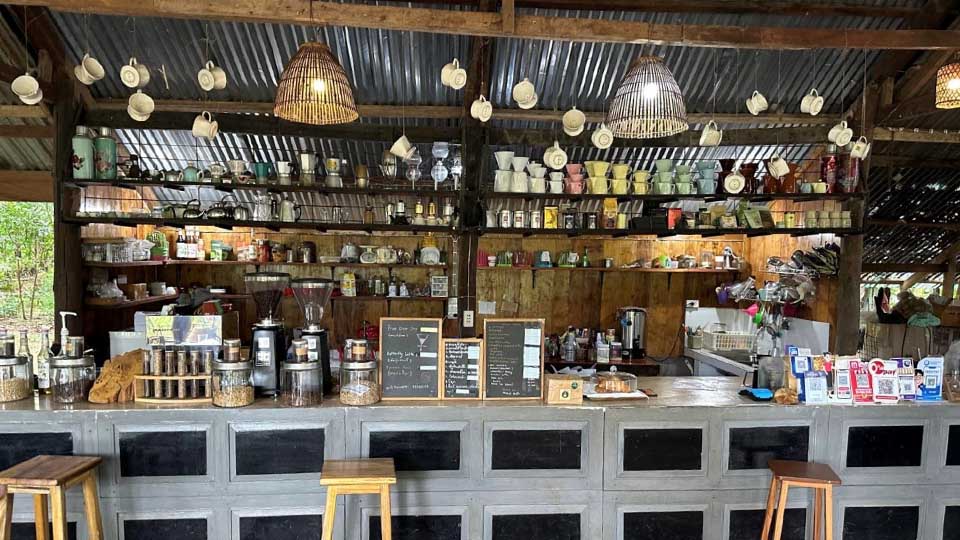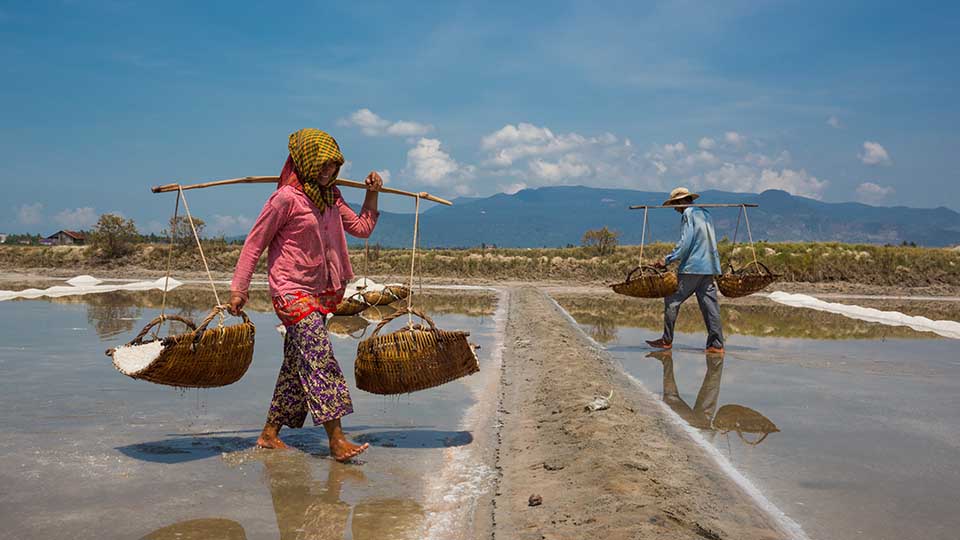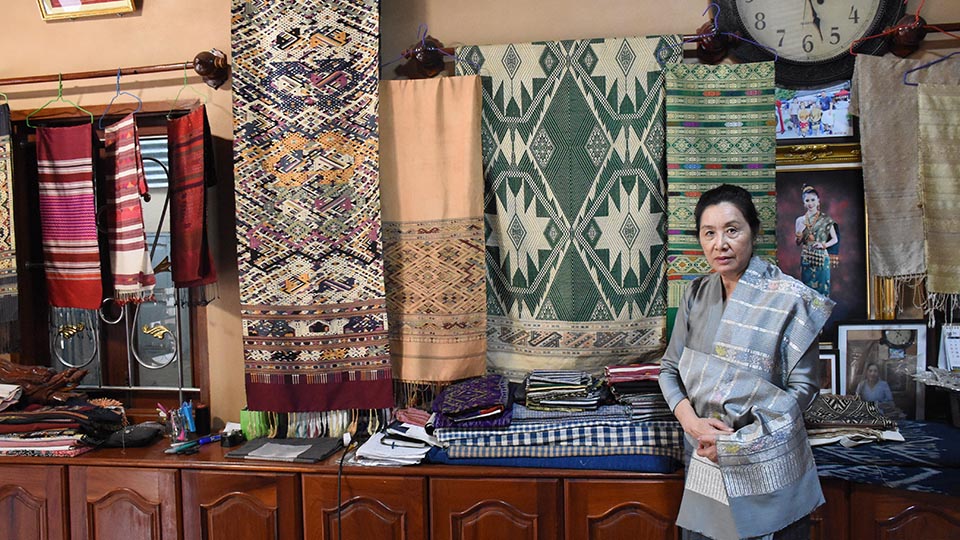Chacha, Georgia
Nestled in the heart of the Caucasus region of Eurasia between the Black Sea and the Greater Caucasus Mountain Range, Georgia has a climate that is perfect for grape cultivation. One of the world’s oldest wine producing regions, grapes are thought to have first appeared in the country as far back nearly 8,000 years. Grape cultivation and wine making are therefore a significant part of Georgia’s history and culture, and continue to play a vital role in the country’s economy. It is not only a rich diversity in wine, however, that Georgia’s vineyards are famous for. Grape cultivation and wine production have also resulted in the development of chacha (not to be confused with the popular cha-cha/cha-cha-cha dance from the Republic of Cuba), Georgia’s traditional national drink. Though chacha can refer to any alcoholic drink made out of fruit, in Georgia chacha has become synonymous with the grape version and is also sometimes called “grape vodka,” “vine vodka,” or “Georgian Vodka.” First distilled over one thousand years ago, chacha is made from grape pomace (the solid remains from wine production) and is a colorless, odorless, and potent (40% or greater alcohol by volume) beverage with a soft, refined, and rich taste.

Goods with specific geographical origin
Playing an important role in Georgia’s agricultural history, the unique geographical conditions of the country has yielded an abundance of flourishing grapevines and vineyards from which chacha is produced. Without these conditions, chacha could have very well never been developed. Although only 11% of Georgia’s land is arable, the country is home to over 500 indigenous grape varieties, such as Rkatsiteli (for white wines) and Saperavi (for red wines). Thanks to Georgia’s nutrient-rich soil and unique climate, these grape varieties yield high-quality wines and equally high quality chacha.
Georgia’s climate is primarily shaped by the influence of three natural elements: mountains, wind, and water. In the north, the Greater Caucasus Mountain Range rises to 5,200 meters high and acts as a barrier against cold air flowing south. The mountains gradually recede into pristine valleys and wide plains towards the center of the country. Going further south, the elevation rises again to form the Lesser Caucasus Mountains, which creates many microclimates between the two mountain ranges. In the west, the coastal lowlands are influenced by warm, moist air that moves in from the Black Sea. Wind carries this air eastward, warming the valleys and plains of the central portion of the country. Because of this geographical variance, Georgia enjoys a varied climate. The western part of the country has a humid, sub-tropical climate with heavy precipitation – between 1,000 and 2,000 millimeters (mm) – which is maintained up until an altitude of approximately 650 meters. At an elevation of about 2,100 meters in the northern or southern mountain ranges, alpine conditions begin, and these high altitude regions of the country experience a drier, more continental climate (hot summers, cold winters, and little rainfall). With approximately 26,000 rivers and over 750 lakes in Georgia, the soil is rich in nutrients and of extremely high quality, especially in river valley floodplains and foothills.
Depending on the region and altitude, the temperature and climate in Georgia can change dramatically. As a result, while the country is geographically small it has a diverse climate that is suitable for hundreds of different types of grapes and vineyards. The pomace that forms the base of traditional chacha comes from ten different regions in the country. Reflecting the variety of Georgia’s grapes, these regions range from Adjara and Samegrelo on the coast of the Black Sea, to the humid western valleys of Imereti, and to the mountainous regions of Racha in the north and Meskheti in the south. The most important region however is Kakheti, which is in the westernmost part of the country and accounts for 75% of all vineyards (approximately 33,000 hectares) in Georgia. Soil in Kakheti is rich in nutrients, organic matter, and essential minerals such as carbonate alluvium (loose sediments containing carbonate, a salt from the organic carbonic compound). Covered in deciduous forests, Kakheti’s valleys and plains are bordered by snowy mountains and experience hot summers and cold winters, with approximately 500 – 700 mm of precipitation per year. These conditions make for some of Georgia’s best grapevines, wine, and chacha.

Traditional knowledge
People throughout Georgia have been using their traditional knowledge to distill chacha for centuries. While it is an alcoholic spirit, it is traditionally believed to have many medicinal properties, such as clearing the sinuses, easing indigestion, and as a painkiller for stomachaches when topically applied. Traditionally distilled at home by communities of farmers, as the popularity of the drink increased so did demand, both domestically and abroad. Production modernized in the 20th century to meet this demand, however the process has remained unchanged overall. Similar to the distillation of vodka, chacha is obtained by fermenting grape pomace and then distilling it via water or steam.
The first step in making chacha is to store the pomace in a sealed container made out of oak or other wood (steel, iron, and other types of containers can also be used) for at least one month, which results in fermentation. In many cases, the pomace would be stored for the winter and then taken out in the spring. The aged, fermented pomace is then moved into a vat and vinegar is added for distillation to take place. After the vat is closed, a cooling mechanism is added, which is traditionally a container filled with water connected to the vat with a cylinder. The cylinder runs from the vat, through the water container, and then out the other end. Once this is completed, a piece of wood is vertically attached to the end of the cylinder. This will allow the distilled chacha to slowly drip into a bottle waiting below. With all of the equipment in place, the connecting pieces (such as the vat’s lid) are sealed with handmade clay or other similar material. Once sealed, a fire is lit under the vat, which boils the grape pomace inside. The alcohol then flows through the cooling cylinder and down the wood dripper into a bottle for collection.
This traditional method of chacha production is still practiced today throughout Georgia in both rural and urban communities. Many families have their own versions of the traditional chacha production method that are passed down for generations. Tapping into this traditional knowledge, some of Georgia’s most famous wineries and distilleries have modernized the process, making it more efficient while retaining the traditional techniques that ensure production of chacha of the highest quality.
Appellations of origin and geographical indication
Georgia’s unique geography and climate give it an abundance of agricultural goods that can be protected through the intellectual property (IP) system, thus preserving traditional knowledge and helping local producers. In recognition of these traditional assets, in 2005 the government of Georgia enacted new IP legislation called the “Law on Appellations of Origin and Geographical Indications of Goods” (the AOGI Law). This law primarily allows for the registrations of appellations of origin (AO) and geographical indications (GI) for wines, spirits, and mineral waters originating in Georgia. Many of Georgia’s famous wines that make up the grape pomace with which chacha is made – such as Atenuri, Kakheti, and Tvishi – are registered as AOs internationally.
In total, the government of Georgia has registered 18 wines as AOs through the Lisbon System for the International Registration of Appellations of Origin, an international treaty managed by the World Intellectual Property Organization (WIPO). These AOs are in fact integral to the continued production of chacha. Because chacha is made from grape pomace, its quality is dependent on the quality of the grapes. Since the AOs requires Georgian to wine come from the highest quality grapes, the appellations therefore ensure that chacha comes from the same high quality grapes. Georgia’s wine AOs therefore play a direct and important role in the quality of chacha.

With regards to GIs, the AOGI Law states that a GI can be registered in the country if it is a name or any other sign (such as a logo) that indicates a geographical area and is used to designate goods that: (1) originate in that specific geographical area; (2) have a specific quality, reputation, or other characteristics which are attributable to that specific geographical area; and (3) are produced, processed, or prepared within that specific geographical area. Chacha meets all of the aforementioned criteria, and on 13 December 2011, the Ministry of Agriculture of the Government of Georgia registered the spirit as the first GI in the country. The GI is registered as CHACHA in order to officially distinguish it from other types of chacha (for the purposes of this case study, “chacha” refers to only the grape pomace variety), or brandy-like liquor made from fruit pomace. In order for a specific chacha to take advantage of the GI, it must come from grape pomace obtained from one or more of the ten specific wine producing regions of Georgia.
While distillation, production, and bottling of the end product is allowed to take place outside these regions, such a product can only use the GI if these activities were carried out within Georgia. Furthermore, the GI has specific requirements for what can be classified as authentic Georgian chacha. For example, the GI also allows for chacha to be produced in wood vessels other than oak. In addition, the drink must be distilled by water or steam and must be no more than 75 percent alcohol by volume. Natural aromas can be added, however these additions must be clearly indicated on the product label. Adding any other spirit or artificially increasing the sugar or spirit content is strictly prohibited. The quality of the grape pomace is also essential, as it is directly linked to the quality of chacha. Grape pomace harvested from high quality, authentic Georgian grapes will yield chacha of an equally high quality. The GI therefore states that the grape pomace used for chacha must come from the same high quality grapes used for Georgian wines in one or more of the ten designated wine producing regions of the country.
Branding
Registering chacha as a GI in Georgia was one of the first steps the country has taken to protect this important national brand. With a GI in hand, chacha producers throughout the country have an indispensible tool with which they can ensure their customers are purchasing authentic, traditionally made Georgian chacha. This is particularly important for the country’s customers abroad. While the overwhelming domestic popularity – and first-hand knowledge of the distillation process – of chacha ensures that many Georgians are aware of the source of their national drink, such assurance outside the country is not so easily attained. Georgian chacha is extremely popular among the country’s neighbors and in the region, and the chacha GI ensures that consumers in these regions are getting real Georgian chacha. Moreover, because the GI only allows the highest quality chacha to be called true Georgian chacha, it can help vineyards build a positive reputation and maintain consumer confidence.
Although Georgia has experienced some economic instability in the last one hundred years, the country’s economy has remained resilient and robust. Foreign direct investment (FDI) is integral to Georgia’s economy, and key to securing FDI is introducing potential investors, customers, and other stakeholders to all the country has to offer. One of the more effective ways to do this is arguably through some of the country’s most popular and respective brands, like the chacha GI. Being the national drink and serving as a sort of a “gateway brand,” the chacha GI is something uniquely Georgian that the government and producers can leverage to bring in more FDI. For example, the city of Batumi on the Black Sea coast is an up-and-coming popular tourist area, and the city’s government has implemented a unique campaign based on the power of the chacha brand. In the center of the city, a new 25-meter tower was built in 2012 that houses an observation deck, clock, pools, and tourist information center. Outside the tower is an ornate water fountain, which for 10 – 15 minutes once per week flows with chacha made from local distillers instead of water. This creative initiative has the potential to increase tourism, introduce visitors to the unique Georgian national drink, and stimulate the local economy. Local distillers that provide the chacha for the fountain could also see a boon in their sales and exposure. Furthermore, promoting the Georgian chacha brand is also a way to generate more interest in the country’s vineyards. With over 12 million liters of wine exported from the country annually, Georgia’s vineyards are one of the country’s most important industrial assets.
Commercialization
For centuries, farmers, families, and small communities in Georgia have produced chacha on a small-scale, local level. As the popularity of the drink increased across the country, it soon became Georgia’s national drink and more large-scale commercialization initiatives were born. In the latter half of the twentieth century, Georgian chacha became an exceedingly popular drink throughout countries in the Commonwealth of Independent States (CIS). This popularity still exists today, and as a result many Georgian vineyards have increased their commercialization of chacha. With the registration of the chacha GI, commercialization and export efforts have increased further. As of 2012, outside of the traditional distilling that still takes place in rural villages and farms (in which many people in the community share in the distillation process), professional distillation and commercialization of chacha comes in two forms: small, domestically oriented wineries and distilleries and larger, export-oriented companies, distilleries, and vineyards.

Smaller distilleries produce chacha that is prized among the local population, however many are not very well known outside of Georgia. The type and flavor of these different varieties of local chacha can differ depending on the region in which they are produced. For example, chacha made by producers in the Kakheti region tend to have more of an oak flavoring than chacha made in the capital city of Tbilisi. Among the larger companies, some of the more popular include Chateau Mukharni, Teliani Valley, Telavi Wine Cellar, and Vazi+. Keeping within the requirements of the GI, these distilleries have enhanced the traditional flavor and aromas of chacha through the addition of natural ingredients. Teliani Valley, for instance, is a Georgian company that distills four types of distinct chacha: Gold, made in aged oak barrels; Silver, made only with pomace from Rkatsiteli grapes (one of the world’s oldest cultivated grapes and originating in Georgia); Honey, in which the chacha is distilled with honeycombs; and Ice, a version with a higher alcoholic content. Vazi+ has commercialized three types of chacha under their “Binekhi” label, all of which have proved to be exceedingly popular. All three types are distilled twice, and the most expensive – Binekhi Estragon – includes the addition of natural estragon (French tarragon; an herbal spice) liqueur at a controlled temperature.
Georgian chacha producers generally market and distribute their products domestically themselves or through any distribution partners. This is true especially for the smaller, lesser-known brands. Larger companies such as Chateau Mukharni and Teliani Valley maintain a network of international distributors – in addition to their domestic activities – and also have attractive websites on the Internet for international customers. Teliani Valley, for example, markets its chacha products spanning 18 countries in Europe, North America, Asia, and Oceania. Furthermore, in 2007, the company entered into a lucrative deal with a number of distributors in the United States of America to sell Teliani Valley chacha in their stores and on the Internet. Whether the scope of commercialization is small and domestic or large and international, Georgian chacha producers have been able to capitalize on the chacha GI and increase the drink’s international exposure and access to new markets.
Business results
For hundreds of years, chacha was primarily locally produced, and nearly each household in Georgia had their own take on the national drink. As the popularity of chacha spread throughout Georgia and neighboring regions, wineries and distilleries in the country ramped up their production efforts. More and more people came to learn about the high quality of traditional Georgian chacha, and demand at home and abroad for professionally distilled chacha increased. Since the liberalization of the country’s economy in the late twentieth century, more wineries, distilleries, and small and medium enterprises in Georgia have increased supply to meet the demand and enjoyed economic benefits as a result. Although the GI was just registered in December 2011, it further solidifies the traits that make up traditional chacha, and has brought a strong, IP backed branding tool that distillers, wineries, and related companies can rely on for continued success.
Beyond the economic impact, Georgian chacha – backed by the GI – has been recognized throughout the world for its excellence. In 2007, Vazi+’s Binekhi Estragon chacha won an International Spirits Award from the distinguished Mundus Vini International Wine Academy in the Federal Republic of Germany. Competing with over 5,000 other wines and spirits, Chateau Mukhrani’s chacha won the gold medal at the 2011 Hong Kong International Wine and Spirits Competition. At the 2012 Chisinau Wines and Spirits Contest in the Republic of Moldova, the Traditional Winery of Kakheti won five silver medals for its chacha. Such awards not only recognize the quality of traditional Georgian chacha, but they are also valuable branding, marketing, and commercialization tools for chacha distillers.
A toast for all
When Georgians first started distilling chacha from wine pomace a millennium ago, it was in small batches at a very local level. Farmers, their families, and communities would pool their resources to make the best chacha they could. Little did they know that one thousand years later the tradition they started would not only turn into Georgia’s national drink, but also into a drink that is internationally renowned. With the implementation of GI and AO laws in Georgia, some of the world’s finest wine is produced in the country, resulting in chacha of equally high quality. Backed by these important arms of the IP system and a strong brand, chacha from Georgia is making headway into the international market, stimulating the economy, and providing everyone with a reason to make a toast.



